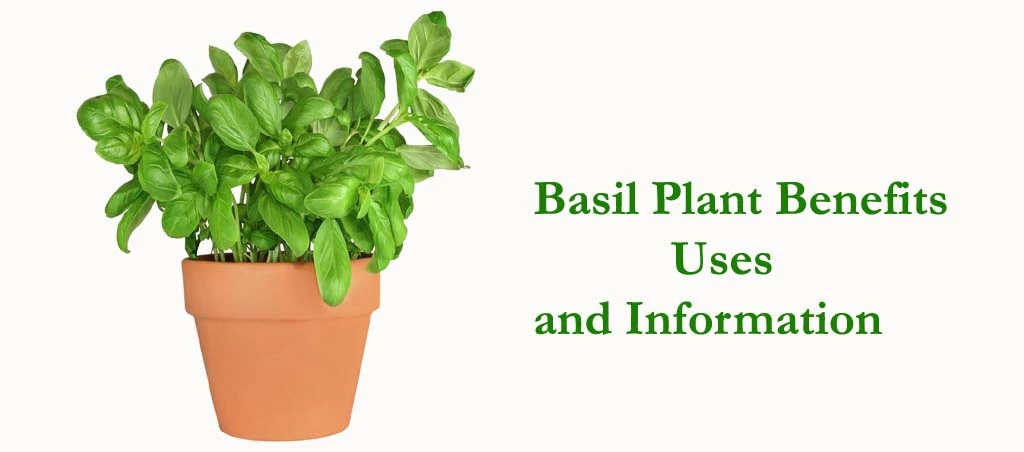reviewed by Christina Lopez
Basil has generations of history as an herb to treat a wide variety of different conditions, from simple bug bites to an antidepressant.
Contents
Ocimum Basilicum, Ocimum basilicum var. citriodorum (lemon), Ocimum basilicum var. purpurascens (opal), Ocimum basilicum var. minimum (bush or Greek)
St. Joseph Wort, Common Basil, Sweet Basil, Garden Basil, Luole, Thai basil, Tulsi, Arjakaand, Albahaca, and various sub-varieties
Native to India, Pakistan, and other warm climate regions of Asia. Introduced into Europe sometime in the sixteenth century.
There are many varieties of basil that are heirloom and hybrid types. This list is a general look at some of the popular types.
Basil is a green leafy plant with some unique traits that make identification easy. (Opal and Rubin’s varieties are purple to red in color) One of the easiest ways to identify Basil is by its scent. Even the multiple varieties will still carry a strong, almost anise-like scent that is semi-sweet but pungent.
Basil leaves are oval-shaped with a smooth or slight toothed edge with a shiny finish. The leaves tend to cup over slightly as they mature. Distinct types of basil cause leaf changes, but most carry similar characteristics.
As part of the mint family, basil grows from a square-type stem. The maturing stems become thicker and woody at the plant’s base and thin out towards the youngest growth. Basil has a bushy growth pattern that reaches a height of 2 to 2 ½ feet when untrimmed.
Flowers form on mature basil in the form of spikes from the center of the stem. Typically, they are purple or white in color.

Leaves, essential oil, flowering tops, and seeds
Eugenol, citronellol, linalool, myrcene, camphor, estragole, pinene, rosemarinic acid, and E-Beta-Caryophyllene.
There are many ways to use basil in cooking. I find it to be a staple in my kitchen, fresh, dried, and in extracts. This is a basic list.
If you were to look up basil benefits for holistic treatment and natural therapy, the list would be a lot longer than this as most of the world has long recognized this wonderful herb as a major healing element. Here where I am from, the United States, it has been diminished sadly to a mere cooking herb.
See additional potential cautions on WebMD.
⇒Disclaimer: The information presented here by Inside Herb Gardens and Its Authors is intended for educational purposes only. The FDA has not evaluated these statements and is not intended to diagnose, cure, treat or prevent disease. Individual results may vary. Before using any herbs, supplements, or other natural treatments, it is always advisable to consult your own doctor or medical professional.
Basil is an easy grower that works both in indoor gardening and outdoor spaces. It can be grown from seeds and cuttings. This is an annual plant that will need to be planted every year. In warm areas, self-seeding is possible. Extended growth can be done by growing the plant indoors and keeping it from reaching the flowering stage.
Read more about growing basil from the article below.
Other Resources:
Articles:
References:
Shop:
Basil has always been one of my favorite garden herbs to grow and use. Primarily for cooking, but I enjoy the many other basil plant benefits as well. As such a versatile flavor in the kitchen, it can become quite easy to add many of this herbal powerhouse’s rich benefits to the foods you enjoy every day.
I have not enjoyed all the medicinal health benefits of basil personally. Bug bites are something that I was introduced to at a young age, though, and I would adamantly say it works. A macerated leaf rubbed on an insect bite I have found to be some of the best relief to itchy.
I find it unique that where I live in the United States, so little emphasis is put on herbs’ healing opportunities; basil is one of them. However, anyone would understand its use in the kitchen and likely have it in some form available. Many would not realize the potentials it has. As always, I hope to grow that. Not only your gardens but your knowledge.
I look forward to hearing your thoughts on Basil. Please share below!
Be well, happy and healthy!
 |
 |
 |
 |

About Christina Lopez
Christina Lopez grew up in the scenic city of Mountain View, California. For eighteen ascetic years, she refrained from eating meat until she discovered the exquisite delicacy of chicken thighs. Christina is a city finalist competitive pingpong player, an ocean diver, and an ex-pat in England and Japan. Currently, she is a computer science doctoral student. Christina writes late at night; most of her daytime is spent enchanting her magical herb garden.
 |
 |
 |
 |
Get new FREE Gifts. Or latest free growing e-books from our latest works.
Disable Ad block to reveal all the links. Once done, hit a button below
 |
 |
 |
 |